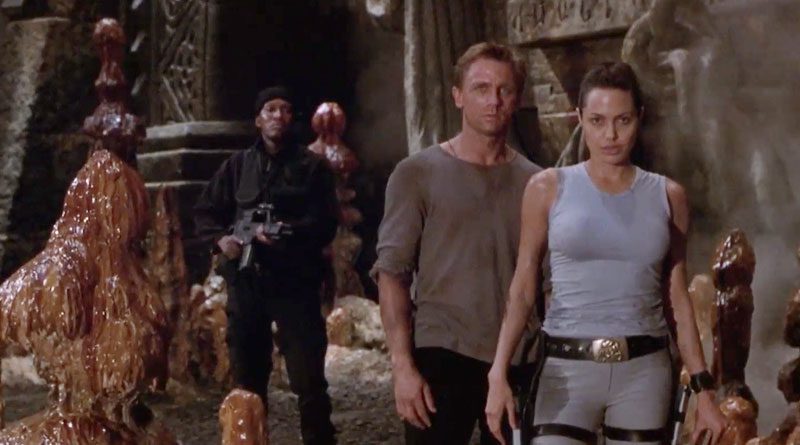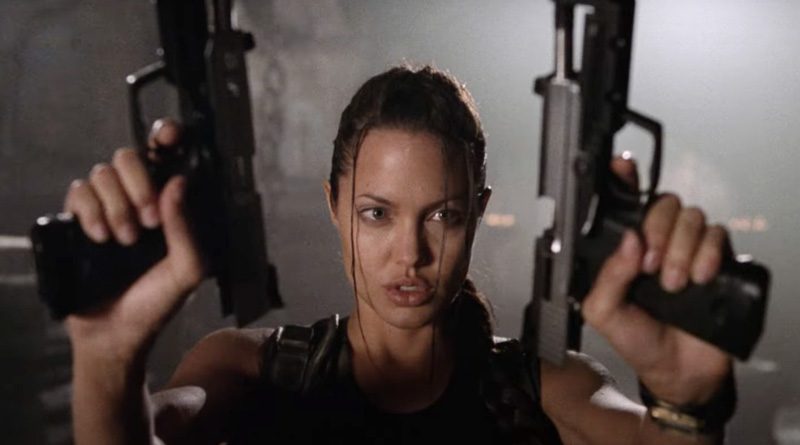Lara Croft: Tomb Raider at 20: Angelina Jolie’s Iconic Role In A Poorly-Executed Adventure Film
The Angelina Jolie-starred Lara Croft: Tomb Raider was fairly a big hit at the time of its release back in 2001. It made history at the opening weekend for a video game movie led by a female star with an impressive US$47.7 million during the first 3-day weekend. And by the end of its theatrical run, it raked in a worldwide total of over US$274 million against a US$115 million budget.
Not bad for such a film that managed to make quite a profit, even though it got ripped to shreds by most critics. I remember when I originally had high hope for Lara Croft: Tomb Raider mainly because of the three factors: the mass popularity of the video game itself, Angelina Jolie and Simon West. The latter, of course, was well known for his directorial debut in Con Air (1997) and to a certain extent, The General’s Daughter (1999). But it was Con Air that had me convinced he’s the right man for the job to handle a high-profile action movie blockbuster.
And then came the time when I finally got to watch the film in the cinema. Throughout the 100-minute duration of the film, I couldn’t believe what I saw on the big screen. After all the big hype and such, Lara Croft: Tomb Raider turned out to be surprisingly a disappointment. A huge disappointment, to be exact.

But the only positive thing that I have to say about this film is Angelina Jolie, who excels in her title role of Lara Croft. Casting an American actress instead of opting for a Brit, given the character’s nationality was already a risky move. And yet, she manages to defy the odds and certainly look the part in Lara Croft: Tomb Raider.
While her sexy screen presence has since become Jolie’s signature role in her career, it’s hard to believe that the studio (Paramount Pictures) was rumoured to consider other actresses from Ashley Judd to Catherine Zeta-Jones and yes, even Jennifer Lopez. Jolie wasn’t exactly favoured by the studio at the time due to her notorious offscreen reputation with her then-husband, Billy Bob Thornton. And despite she’s already an Oscar winner for her supporting performance in Girl, Interrupted (1999), she was hardly a box-office draw up until then. Fortunately, the studio finally took the risk of casting her in the title role and the rest, as they say, is history.
The film itself, however, is a vastly inferior version of Indiana Jones-style action adventure minus the palpable thrills and engaging storyline. The plot — credited to Patrick Massett and John Zinman — falls flat from the get-go, where we see Lara Croft (Jolie) all geared up with two 9mm handguns (the stainless-steel Heckler & Koch USP Match) holstered around her thighs and dressed in a signature short shorts. Instead of opening the film with Lara going on an adventure and raiding a tomb (a waste of opportunity if you asked me), it was actually a training exercise where she needs to take down a giant robot. While we get Lara doing familiar moves such as shooting with two guns and backflips, the whole scene itself feels more like a noisy filler than a thrilling set piece.
We also get to see Lara in a gratuitous shower scene later on but of course, in a PG-13 way and here, Simon West took every opportunity to film Angelina Jolie like he’s making a hair shampoo commercial.

Now, the story proper only arrives when Lara wakes up one night following a mysterious ticking of a mythical clock hidden somewhere in her family manor. The clock happens to be a key that leads to the discovery of the Triangle of Light, which contains the power to control time. An artefact that the secret society of the Illuminati, particularly Manfred Powell (Iain Glen) who wants it badly.
The adventure does finally takes place where Lara travels to several locations like Cambodia and Iceland. At one point, there is a subsequent scene involving Lara encounters re-animated statue guardians come to life inside the Angkor Wat temple. What follows is an effect-heavy action sequence that looks dated even by 2001 standard at the time and worst of all, there is little sense of danger or menace. An action-adventure like Lara Croft: Tomb Raider requires high-stakes scenarios, which is something that the film sorely misses the point.
It doesn’t help either that the film fails to give Lara a much-needed emotional arc. While we still get to see her grief over the death of her father, Lord Richard Croft (Jolie’s real-life dad, Jon Voight), the scene is rather perfunctory than something we can feel invested with their father-and-daughter relationship. Even Voight’s cameo appearance feels more like a mere stunt casting than well, a fleshed-out character.
Back to Lara, as much as Jolie nailing the undeniable charisma and physical resemblance of the famous video game character (minus the impossibly oversized boobs, of course), she is mostly reduced to a one-dimensional and overly-confident female adventurer. In other words, she’s hardly a flawed or relatable protagonist.

Lara Croft: Tomb Raider also featured the pre-James Bond Daniel Craig in a supporting role as Lara’s may-or-may-not-be romantic interest, Alex. And yes, his character happens to be an American but his accent is wobbly. Craig’s performance is pretty much forgettable here. Right to the point that I actually forgotten he used to appear in Lara Croft: Tomb Raider after revisiting the film recently. Craig’s career, of course, would only skyrocket five years later in 2006’s gritty James Bond reboot of Casino Royale.
Despite the critical bashing of the film, Angelina Jolie reprised her role for one last time in the 2003 sequel, Lara Croft: Tomb Raider – The Cradle of Life. While the second film is a slight improvement over the original, it was still a creative and financial disappointment. Not even switching a different director from Simon West to Jan de Bont, who had a chance to redeem himself from his two big-budget fiascos after 1997’s Speed 2: Cruise Control and 1999’s The Haunting, can make much of a difference. The once-promising filmmaker of Speed (1994) and Twister (1996) continued to be a pale shadow of what he used to offer us in the past. If that’s not enough, Lara Croft: Tomb Raider – The Cradle of Life turned out to be his last directorial effort in Hollywood.
Although there were talks about a possible third instalment of Lara Croft: Tomb Raider, Jolie chose not to return and it only took a 15-year gap before we finally get to see another Tomb Raider film. But instead of a continuation from the Angelina Jolie-led franchise, it turned out to be a reboot with Alicia Vikander taking over the iconic character.




